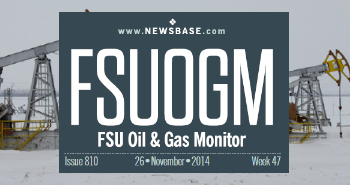FSUOGM: Russia seeks to boost domestic gas sales on the exchange
_42.jpg)
Russia’s Federal Antimonopoly Service (FAS) and its energy ministry have proposed regulations requiring Gazprom and other producers to sell a share of their gas output on the St. Petersburg International Mercantile Exchange (SPIMEX), the Moscow-based Kommersant newspaper reported on October 8.
According to a draft joint order, Gazprom would be required to sell 10% of its domestic supply on the exchange, while independent suppliers would be subject to a 2% requirement. The condition for selling at least 10% of gas through the exchange by 2026 is part of the National Competition Development Plan.
In a statement to Kommersant, the FAS explained that gas consumers, by purchasing on the exchange, would gain the ability to plan long-term procurement through a transparent pricing mechanism. It would also enable the use of exchange quotations as domestic market indicators of gas prices, and would help prevent instances of monopolistically high pricing, according to the FAS.
SPIMEX confirmed to Kommersant that the exchange, together with Gazprom, the operator of energy commodity deliveries, and other market participants, has established the technological infrastructure needed to support the initiative. This includes the creation of a system for daily commercial gas accounting and balancing of unused gas purchased through exchange trading, aimed at optimising these processes. Gazprom declined to comment on the initiative.
For more than a decade, the government has attempted to develop liquid gas indices. The FAS last made proposals on this in 2022, when it also recommended setting the gas sale threshold at 10% for Gazprom and 3% for independent producers. The launch of the first SPIMEX trades was part of efforts to liberalise the gas market, but the absence of mandatory sales requirements led to a gradual decline in the volume of gas traded on the platform.
According to SPIMEX data, 9.6bn cubic metres of gas were sold on the exchange in 2023, while in 2024 this figure dropped to 5.7 bcm. Gazprom is authorised to sell up to 25 bcm per year through the exchange, but its share of trading on SPIMEX fell from 25.2% in 2022 to just 5% in 2023, according to the company’s report.
One market participant told Kommersant that gas has enough liquidity to be a traded commodity, citing the Henry Hub index in the US, which serves as a domestic price indicator and a reference point for export contracts. While a similar index could serve as a global benchmark for Russian gas, the domestic market remains regulated, limiting the creation of such an indicator, the source told the newspaper.
If you’d like to read more about the key events shaping the former Soviet Union’s oil and gas sector then please click here for NewsBase’s FSU Oil and Gas Monitor.


Follow us online